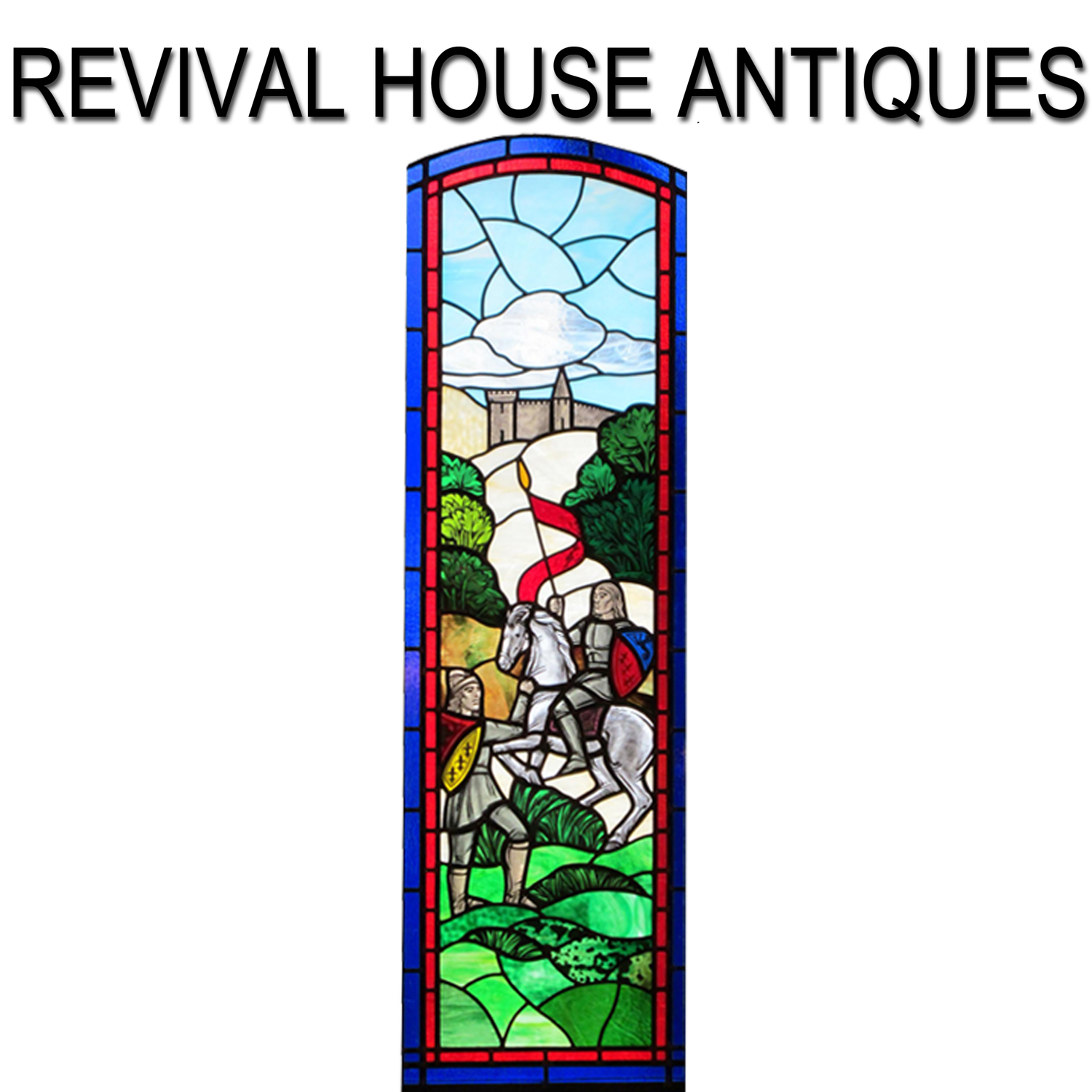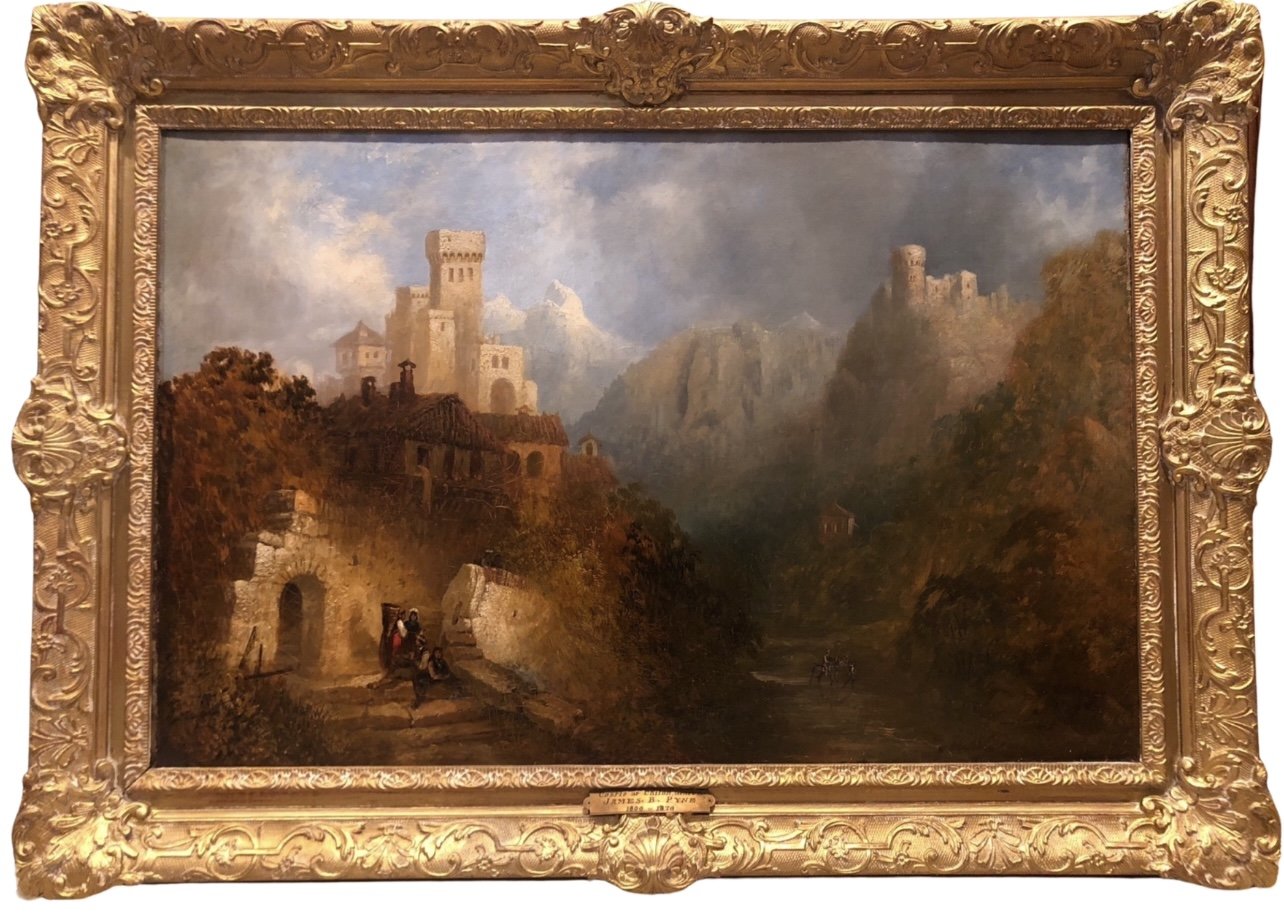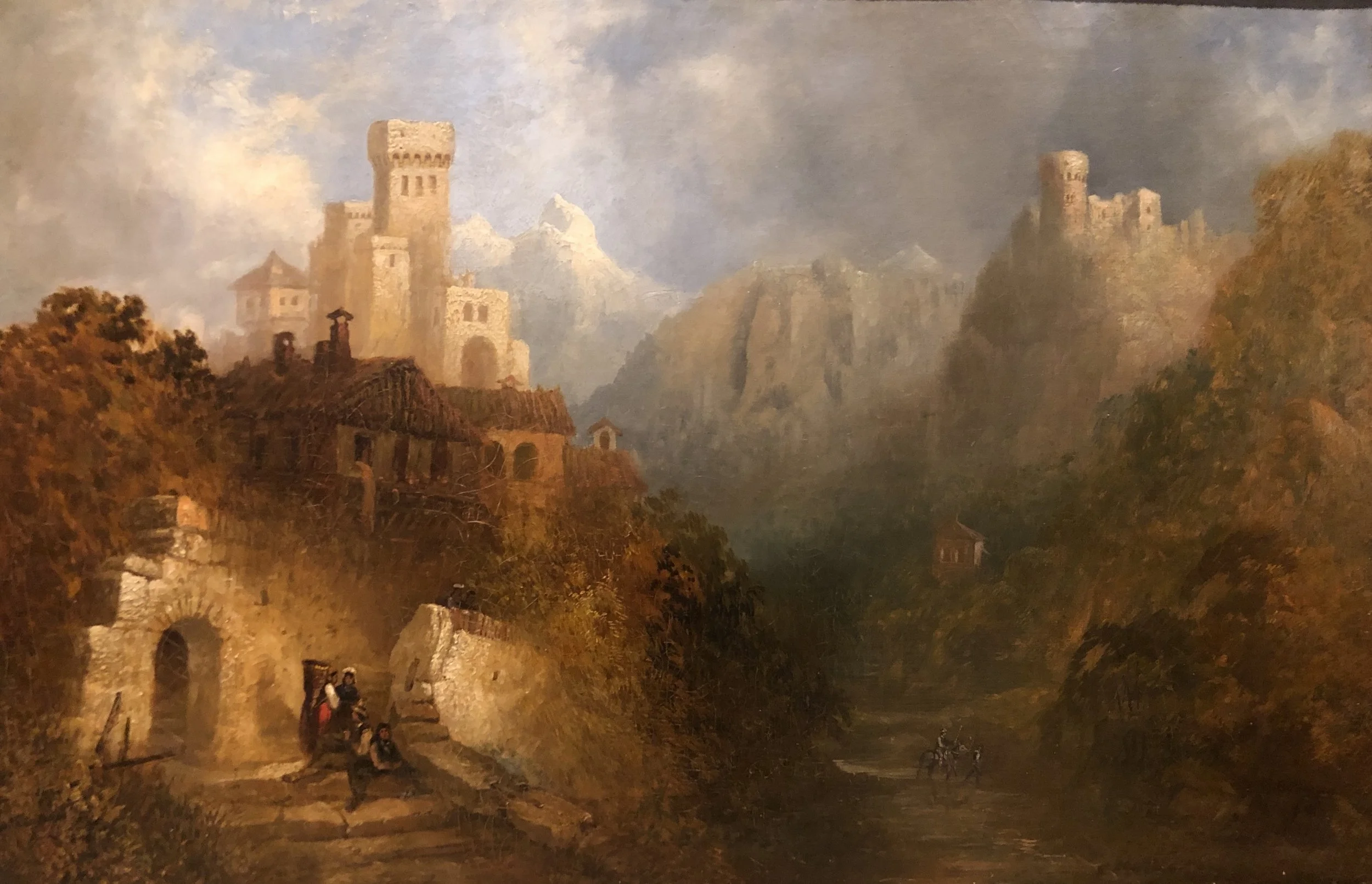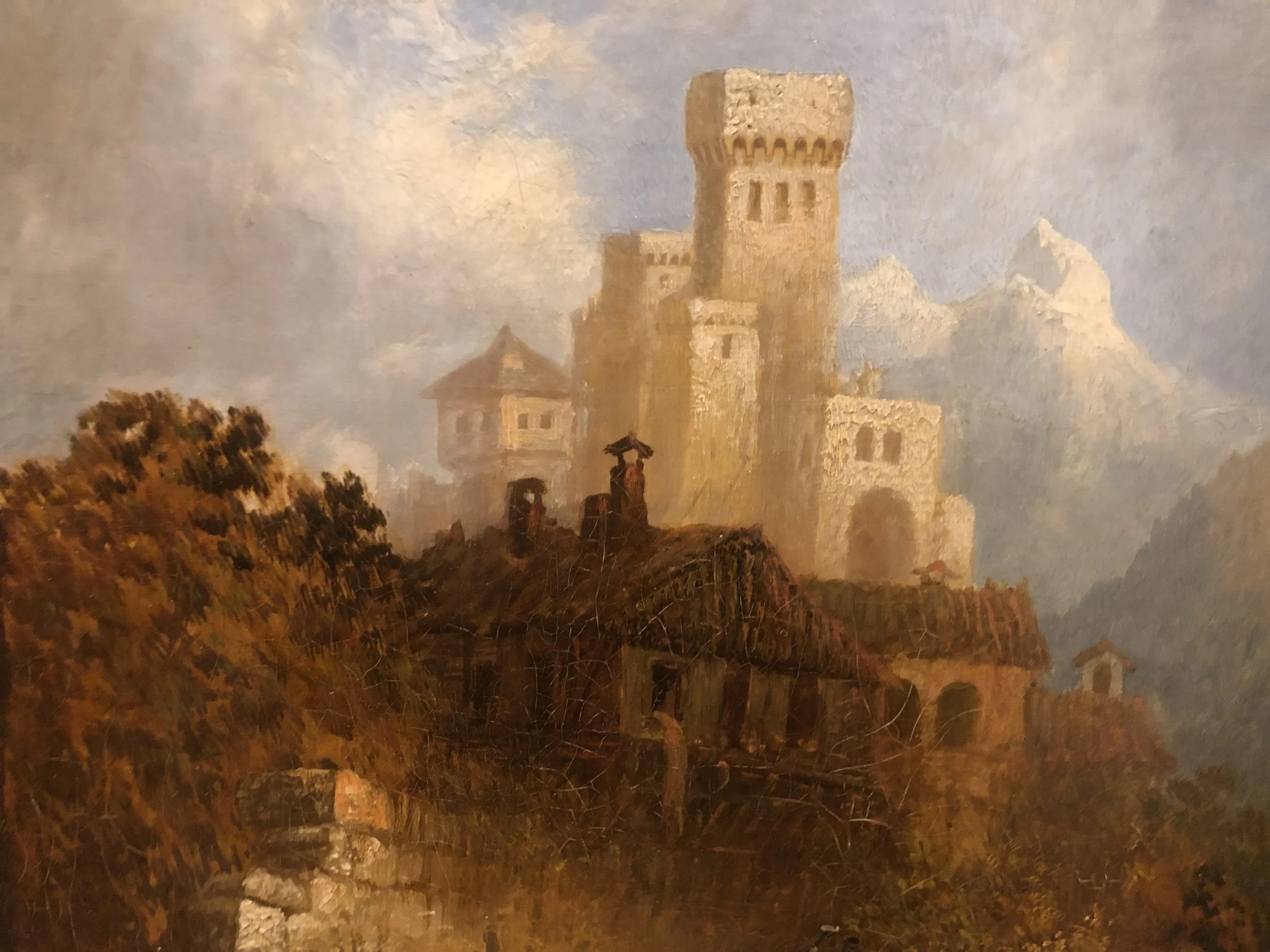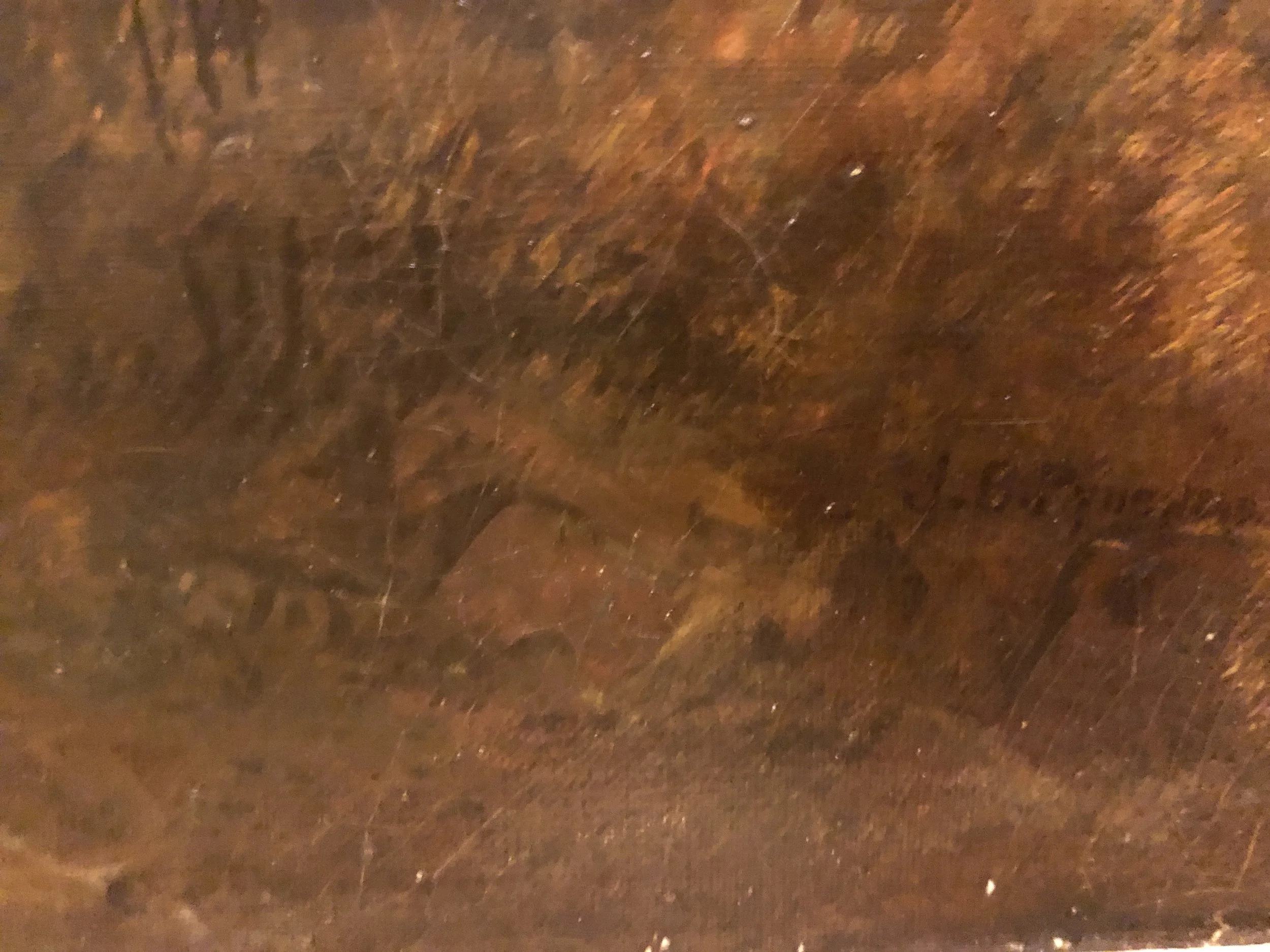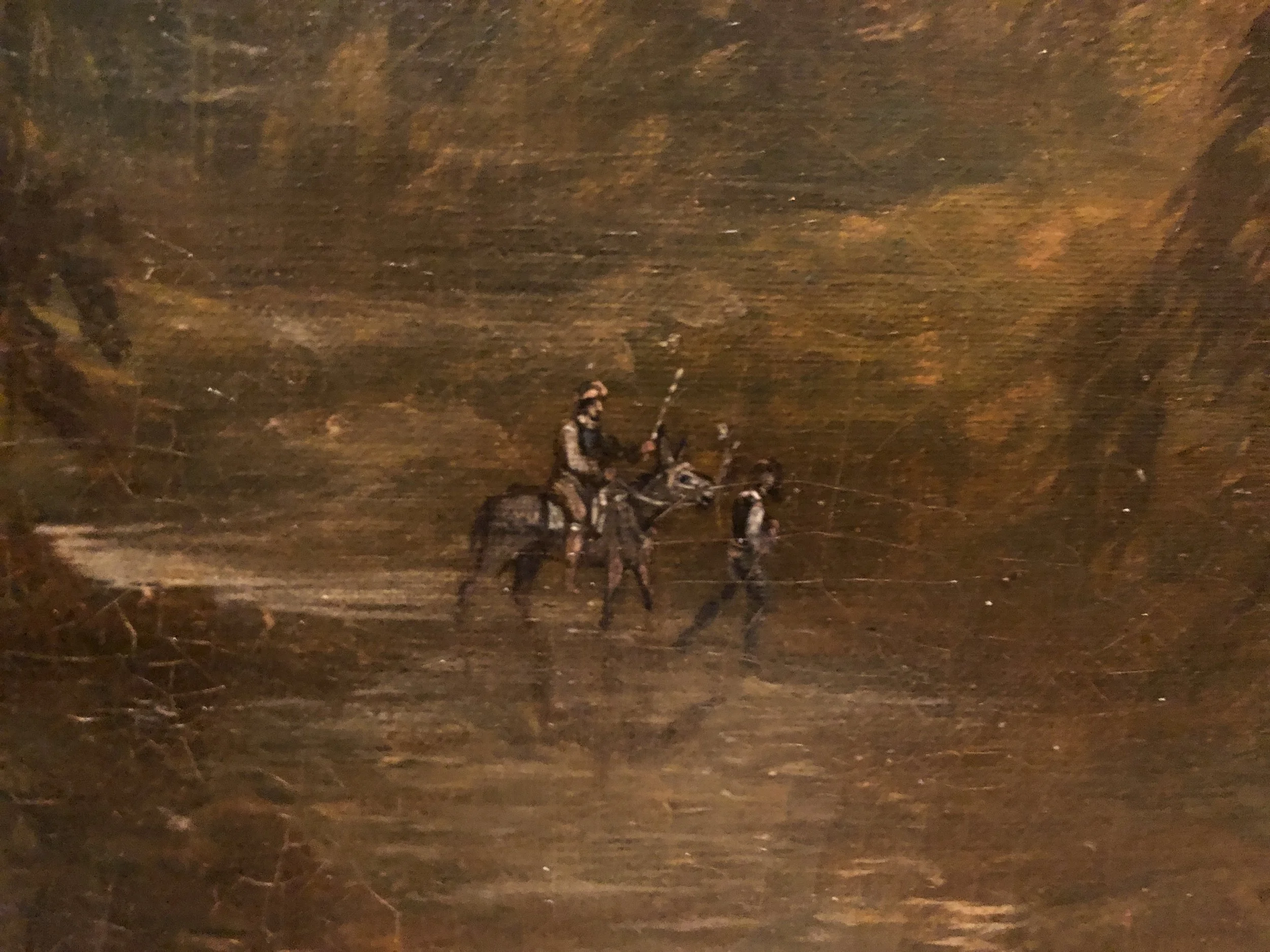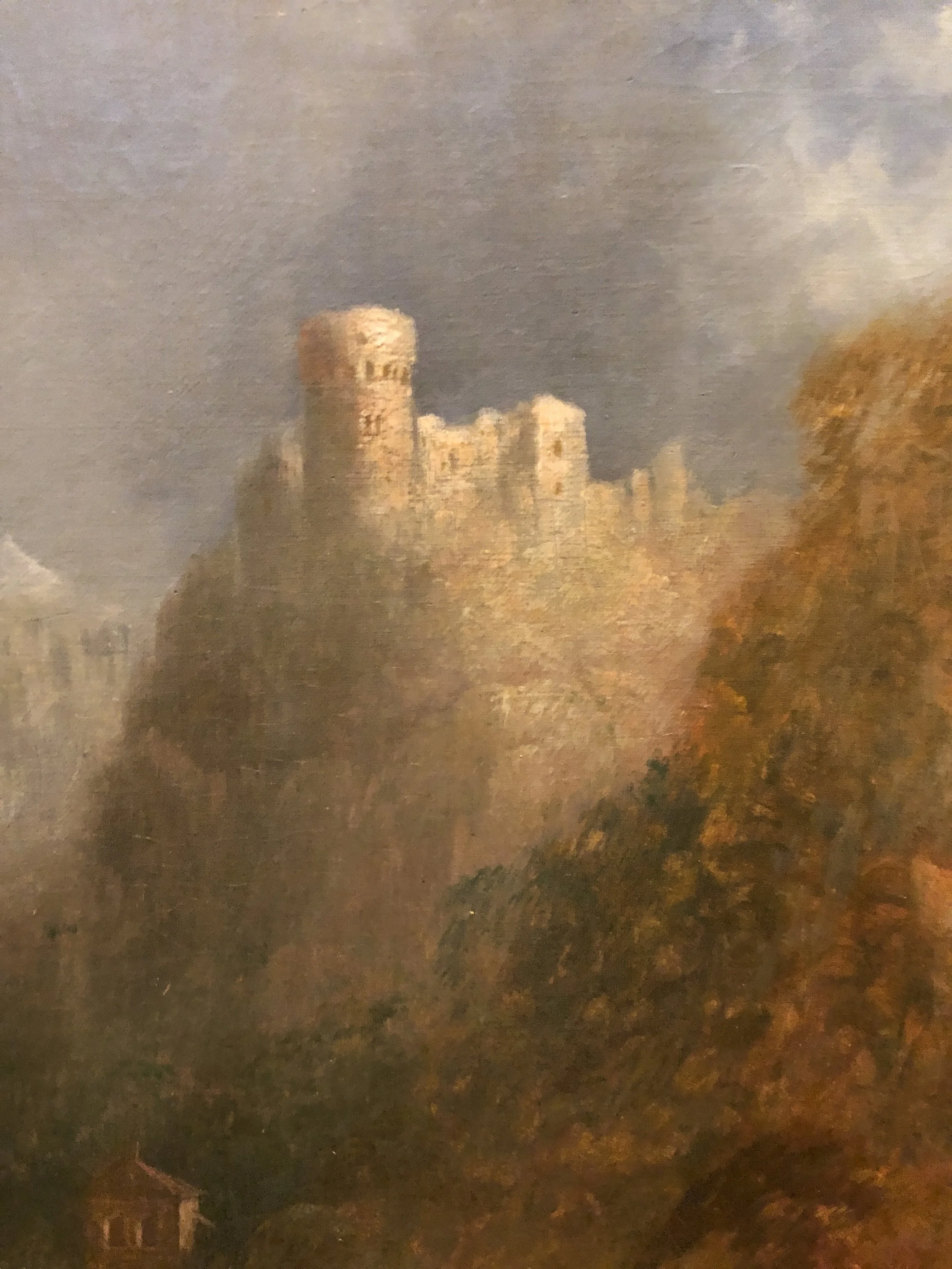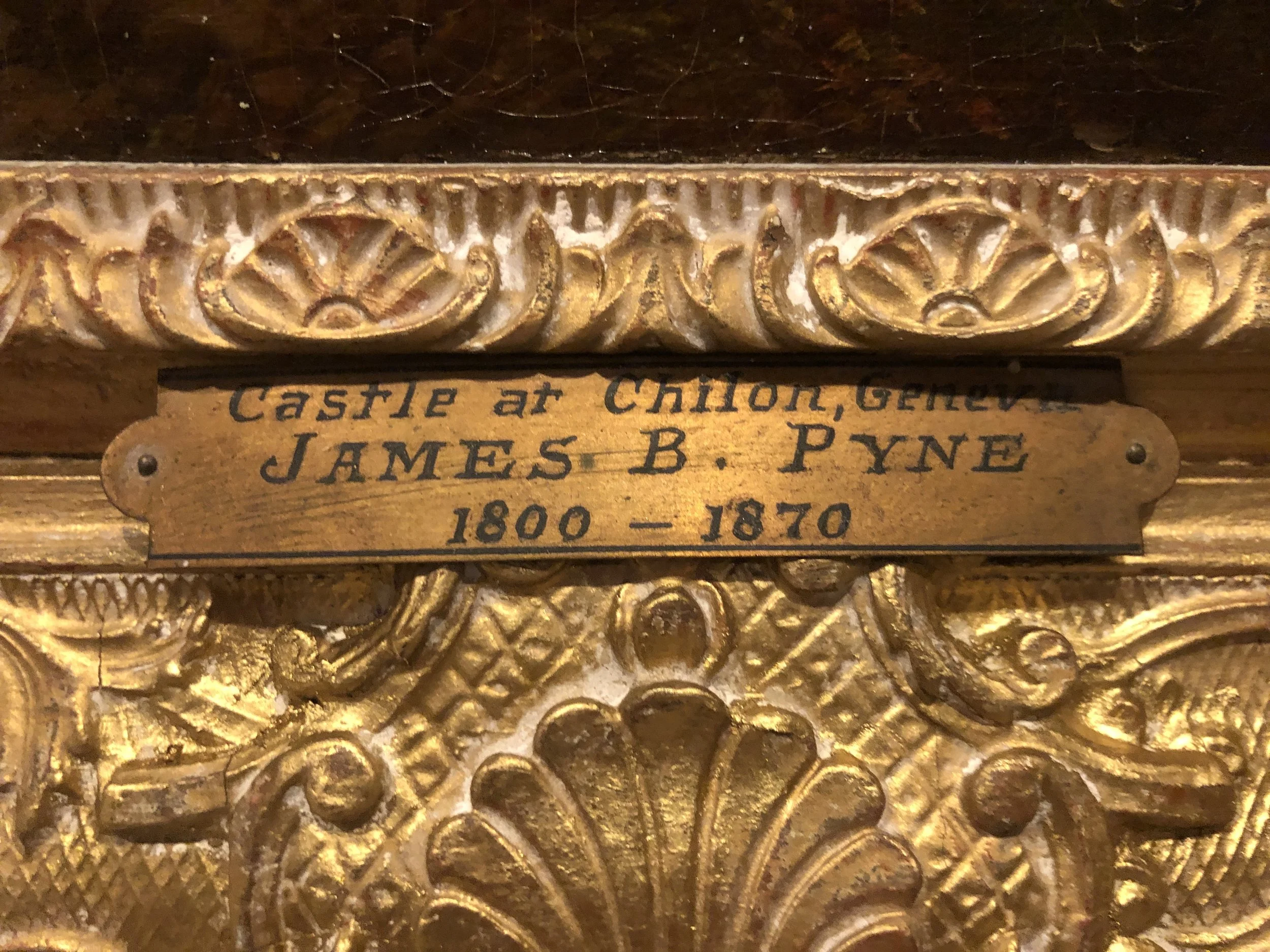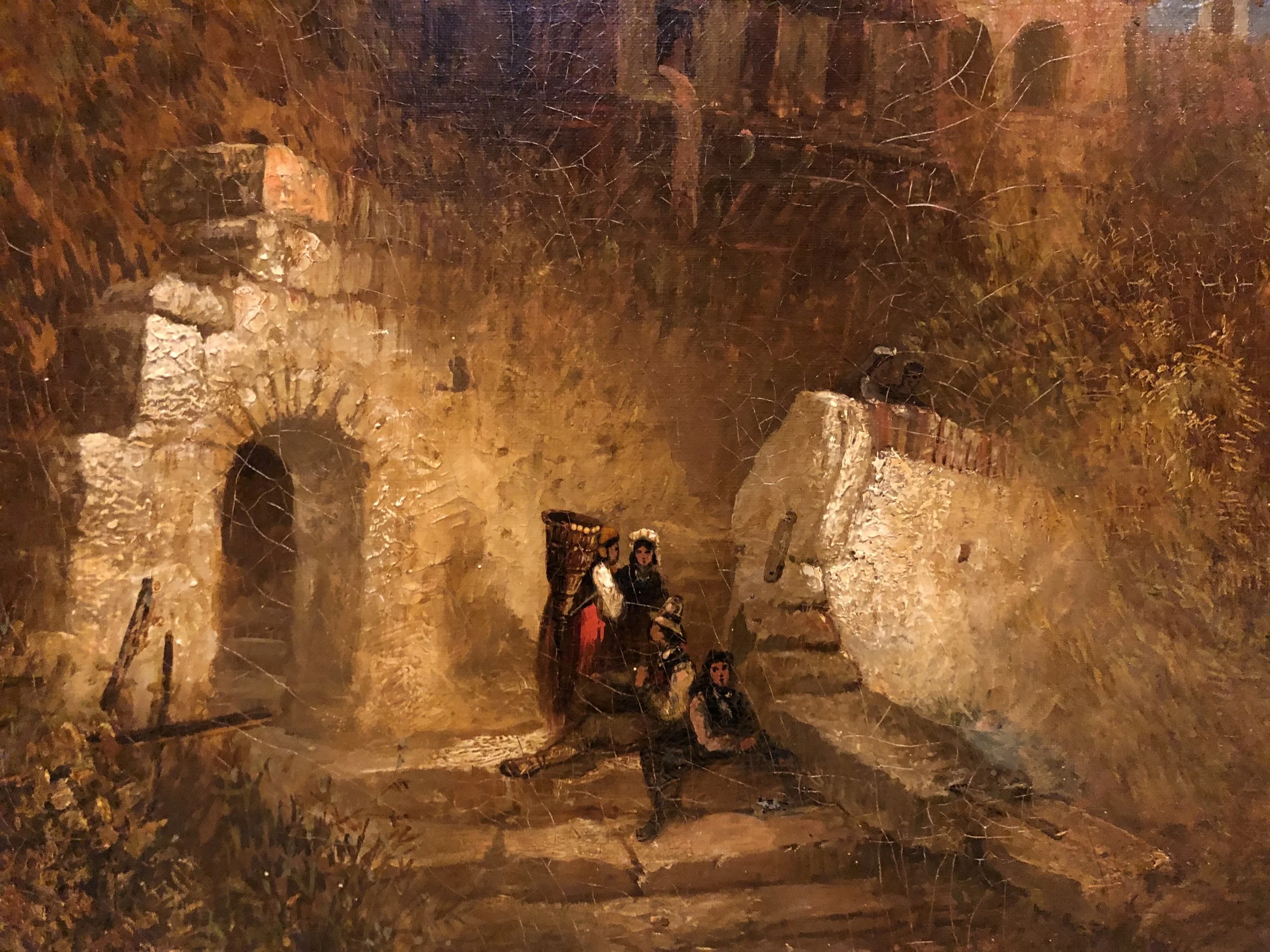Reserved - James Baker Pyne, Oil on Canvas, Castle at Chillon, Lake Geneva, Switzerland
Reserved - James Baker Pyne, Oil on Canvas, Castle at Chillon, Lake Geneva, Switzerland
An oil on canvas painting by English artist, James Baker Pyne depicting the “Castle at Chillon” Lake Geneva, Switzerland. The painting features a stone archway on the left with several figures standing on the stone steps. The castle is high on the mountain on the right side of the painting. There is a rider on horseback with a figure walking next to him. The work is signed by the artist and titled on the nameplate with the artist name and lifespan (1800-1870).
The painting measures approximately 19 1/2” x 30” and with the gilt frame measures 26 1/2” x 37”. The painting was recently cleaned and revarnished by Baumgartner Fine Art Restoration in Chicago.
Information about the artist from AskArt Archives: James Baker Pyne (1800-70) was an English landscape painter who became a successful follower of J.M.W. Turner, after having been in his earlier years a member of the Bristol School of artists and a follower of Francis Danby.
Pyne was born on 5 December 1800 in Bristol, England and taught himself to paint. He took part in the sketching activities of the Bristol School in the 1820s, and exhibited for the first time in Bristol in 1824. His style and subject matter, namely the atmospheric depiction of local landscapes and imaginary scenes, were those of Danby and the Bristol School, among whom he was one the most able oil painters. Examples were Imaginary Scene (1828) and View of the Avon from Durdham Down (1829).
In 1832, after producing some oil paintings of the Bristol Riots, he spent 6 weeks in France with his fellow Bristol School artist Edward Villiers Rippingille. Pyne also seems to have participated from 1832-33 in the revival of the Bristol School's sketching meetings.
William James Müller had been apprenticed to Pyne during 1827-29/30. However Müller did not remain much influenced by Pyne and the other Bristol School artists. Pyne himself did not long continue in the style of Danby's "poetical" landscapes. In the mid 1830s, probably in 1835, he moved to London where he developed his mature style. His landscapes now followed Turner in their colours and style of composition. Turner's influence can be seen for example in Clifton, Near Bristol, from the Avon (1837), which was exhibited at the Royal Academy. Pyne exhibited at the British Institution during 1833-44 and at the Royal Academy during 1836-41. He became Vice President of the Society of British Artists.
In 1846 he travelled to Germany, Switzerland and Italy. He often painted in the Lake District. The art dealership Thomas Agnew and Sons commissioned him to paint in the Lake District in 1848, and then in 1851 to make a three year tour of Italy, in which he was accompanied by the Bristol watercolourist William Evans.
Pyne died on 29 July 1870 in London, leaving sons James Baker Pyne, a photographer, and Charles Pyne, an artist.
This item includes FREE Shipping in the United States, other areas would incur a shipping charge.
